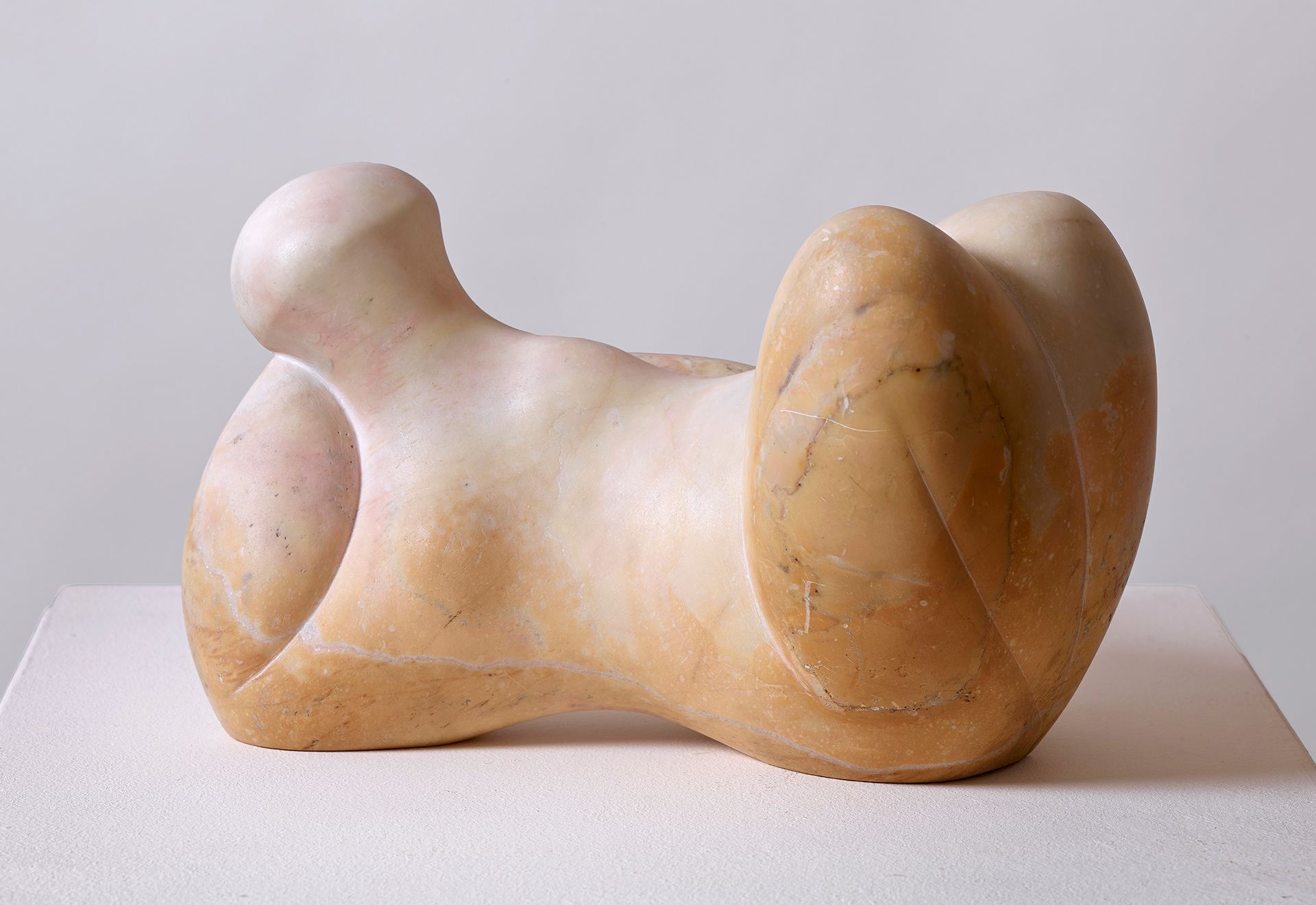
Baltasar Lobo (Cerecinos de Campos, Zamora, 1910 – Paris, 1993)
The Siesta
1969
WORK INFORMATION
Marble, 19 × 32 × 19 cm
OTHER INFORMATION
Signed: "Lobo"
Baltasar Lobo arrived in Paris in March 1939, one month after crossing the border along with thousands of retreating Spanish Republican soldiers and escaping from the concentration camp at Argelès-sur-Mer. He had been trained in the art of religious wood carving in Valladolid by the artist Ramón Núñez and briefly studied at the San Fernando School of Fine Arts in Madrid. Lobo was somewhat familiar with modern art thanks to exhibitions such as Españoles residentes en París, held in 1929 at the Botanical Gardens and featuring sculptures by Pablo Gargallo, Manolo Hugué and Alberto, and the show of Picasso's paintings organised by Amics d'Art Nou (ADLAN) in 1935.
In Paris, where he would spend the rest of his life, Lobo secured the support of Picasso and especially the sculptor Henri Laurens, who hired him as an assistant and influenced his art more than any other. After becoming a pioneer of Cubist sculpture, since the late 1920s Laurens had been practising a form of sculpture based on archaic and classical tradition that emphasised simplified forms and strove to frugally express volume and frozen movement. The Spanish sculptor was able to adapt these sculptural concepts to his own personality, embracing formal simplicity and sobriety and focusing on humanised classical themes, in particular maternity and, after the 1950s, reclining nude bathers that allowed him to capture the human figure in space with dynamic, enveloping forms.
Around 1957, as illustrated by pieces such as Tête de gitane [Head of a Gypsy Woman] and Grand nu allongé [Large Reclining Nude], his study of the work of Brancusi, who died that same year, inspired him to use the rhythmic repetition of volumes to animate space. This also marked the beginning of his progressive abstraction, conceived as formal simplification and refinement, although Lobo never stepped outside the confines of figuration. In the 1960s, with works like La Siesta [The Siesta] he developed his definitive visual language, maintaining the concepts of rhythm in volume and unity in form. In this piece the marble block looks like an almost natural rock formation with rounded forms that only hints at the shape of a reclining female nude, with lumps suggesting bent knees and arms propping up something that slightly resembles a head.
This work is characteristic of Lobo's sculpture and proof of the fact that he managed to create a uniquely personal style which stood the test of time, immune to passing artistic fads and trends. Thanks to his mastery of every carving and modelling technique known to sculpture, Lobo created seamless, delicately wrought forms which offer an eloquent expression of beauty and harmony using the formal vocabulary and humanised ideas that characterised avant-garde sculpture in interwar. [Carmen Fernández Aparicio]

